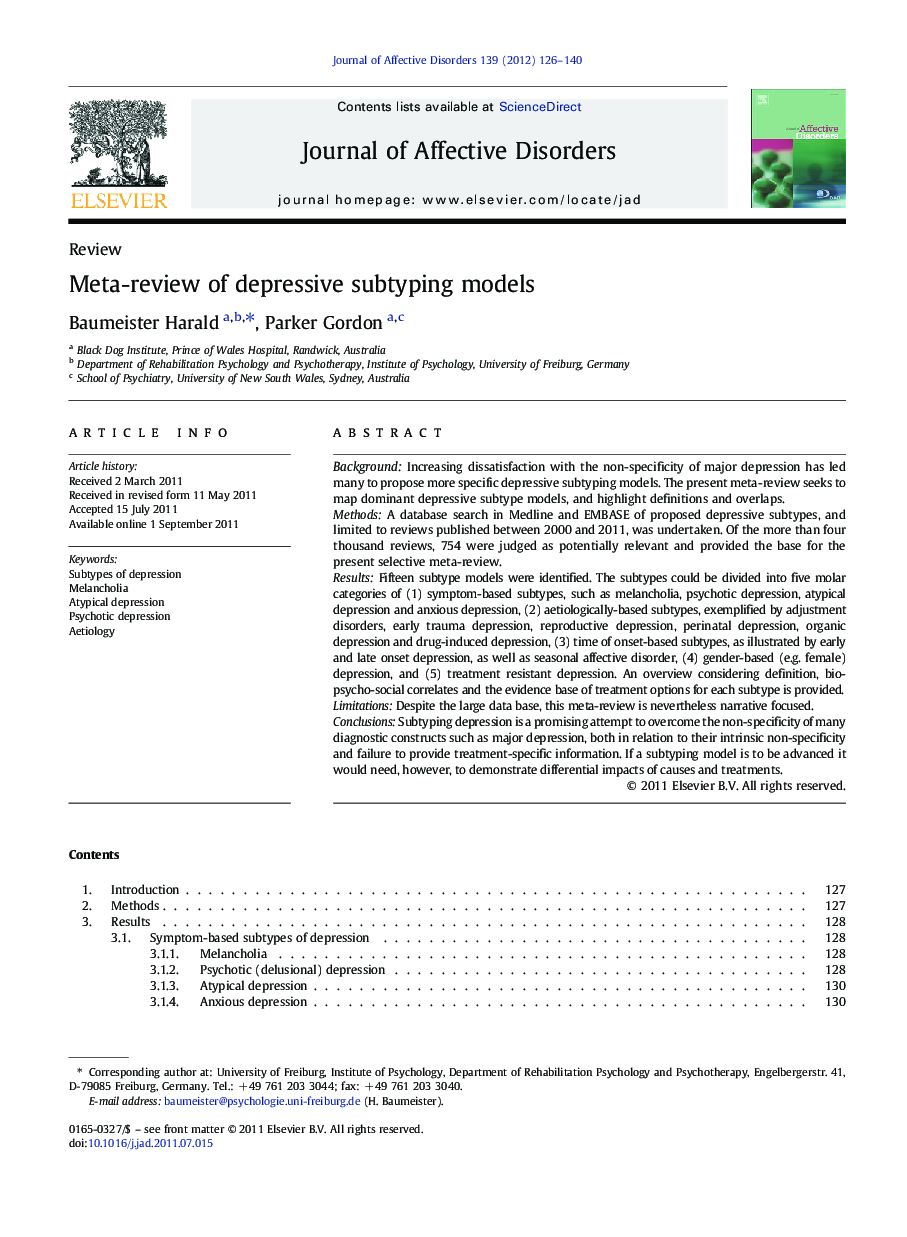| Article ID | Journal | Published Year | Pages | File Type |
|---|---|---|---|---|
| 4186429 | Journal of Affective Disorders | 2012 | 15 Pages |
BackgroundIncreasing dissatisfaction with the non-specificity of major depression has led many to propose more specific depressive subtyping models. The present meta-review seeks to map dominant depressive subtype models, and highlight definitions and overlaps.MethodsA database search in Medline and EMBASE of proposed depressive subtypes, and limited to reviews published between 2000 and 2011, was undertaken. Of the more than four thousand reviews, 754 were judged as potentially relevant and provided the base for the present selective meta-review.ResultsFifteen subtype models were identified. The subtypes could be divided into five molar categories of (1) symptom-based subtypes, such as melancholia, psychotic depression, atypical depression and anxious depression, (2) aetiologically-based subtypes, exemplified by adjustment disorders, early trauma depression, reproductive depression, perinatal depression, organic depression and drug-induced depression, (3) time of onset-based subtypes, as illustrated by early and late onset depression, as well as seasonal affective disorder, (4) gender-based (e.g. female) depression, and (5) treatment resistant depression. An overview considering definition, bio-psycho-social correlates and the evidence base of treatment options for each subtype is provided.LimitationsDespite the large data base, this meta-review is nevertheless narrative focused.ConclusionsSubtyping depression is a promising attempt to overcome the non-specificity of many diagnostic constructs such as major depression, both in relation to their intrinsic non-specificity and failure to provide treatment-specific information. If a subtyping model is to be advanced it would need, however, to demonstrate differential impacts of causes and treatments.
